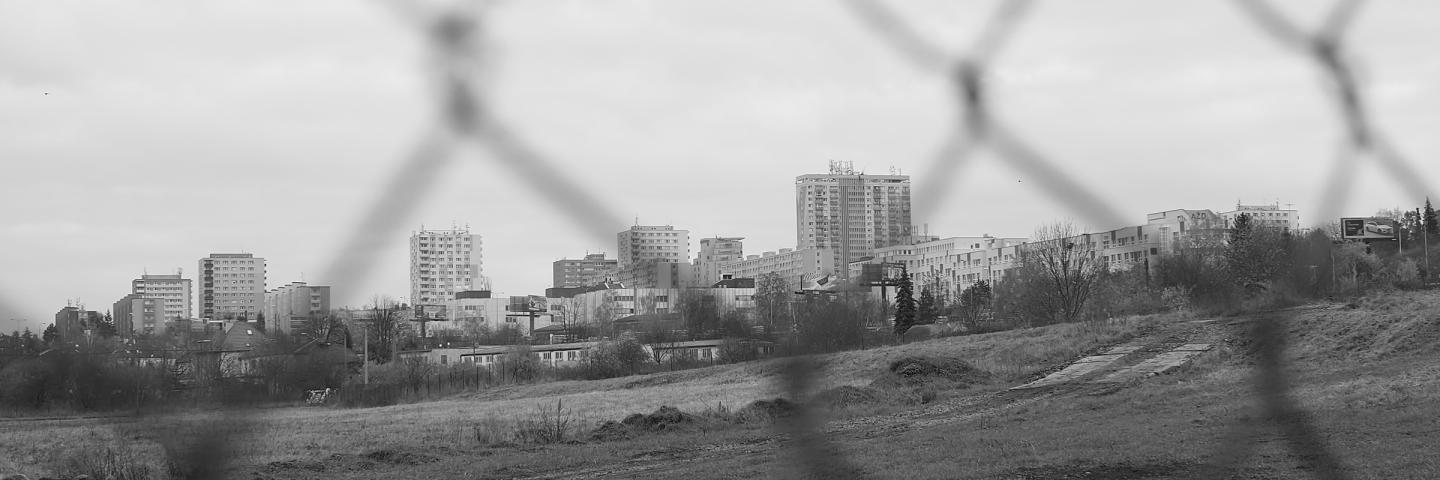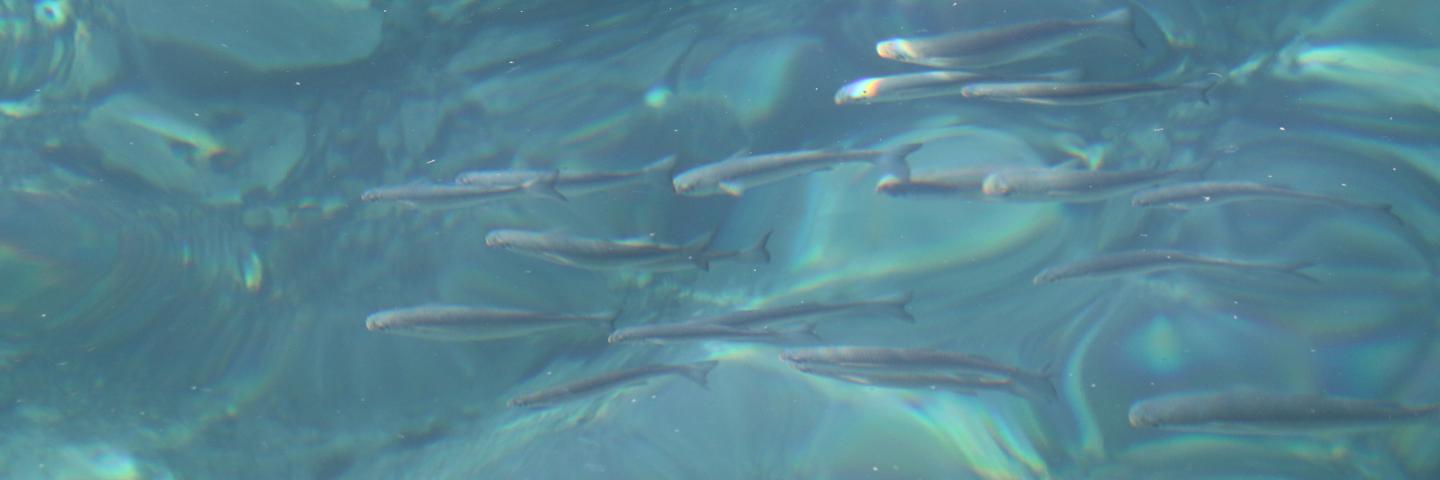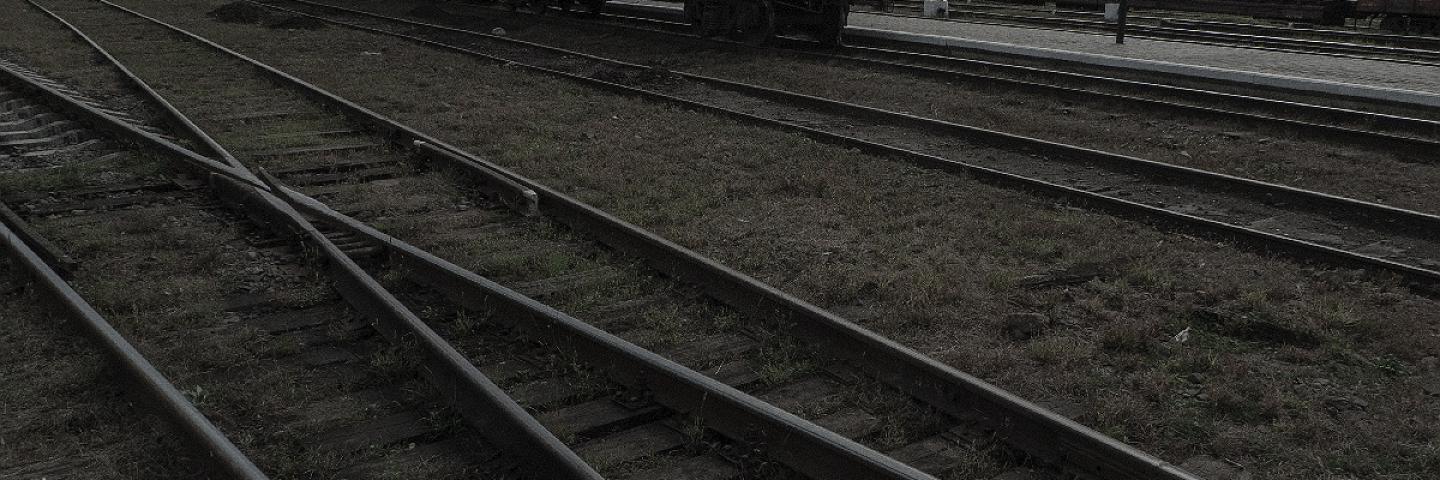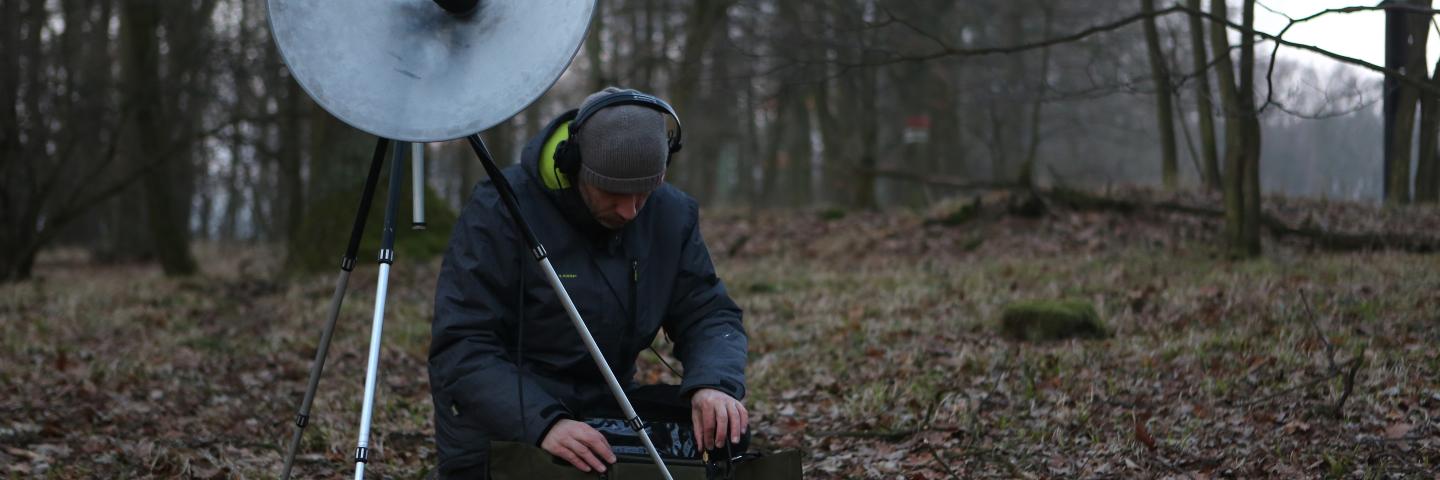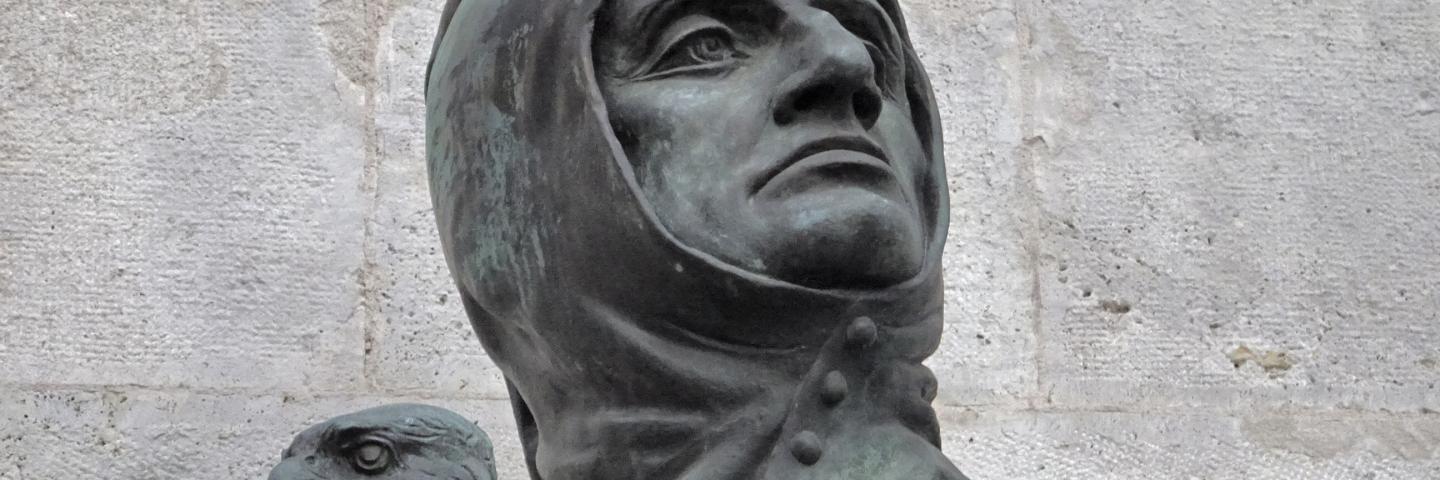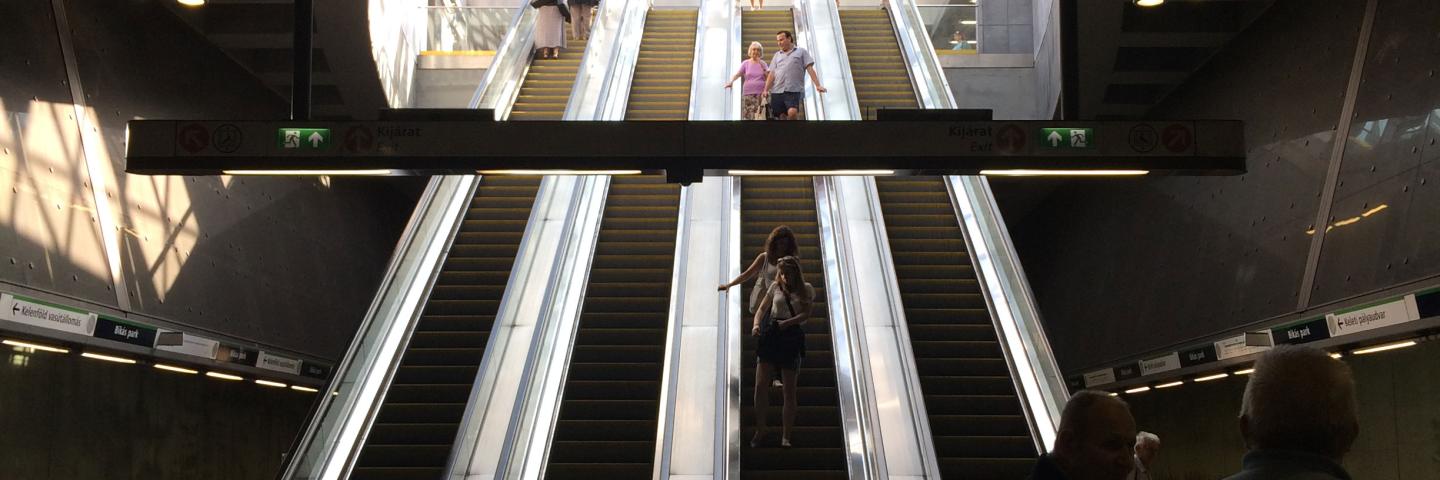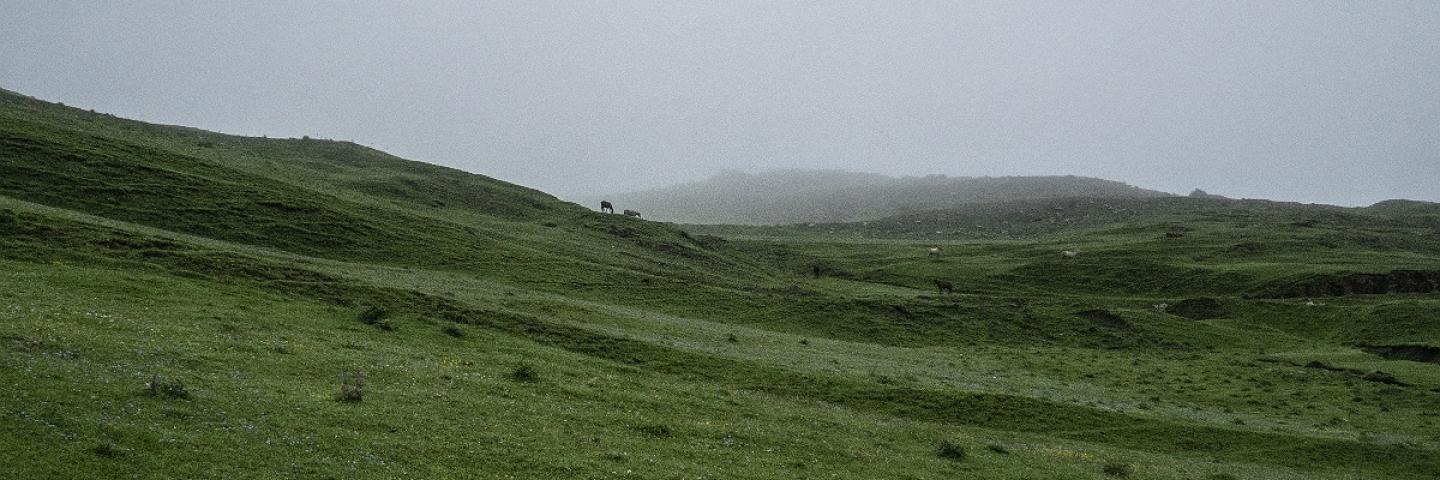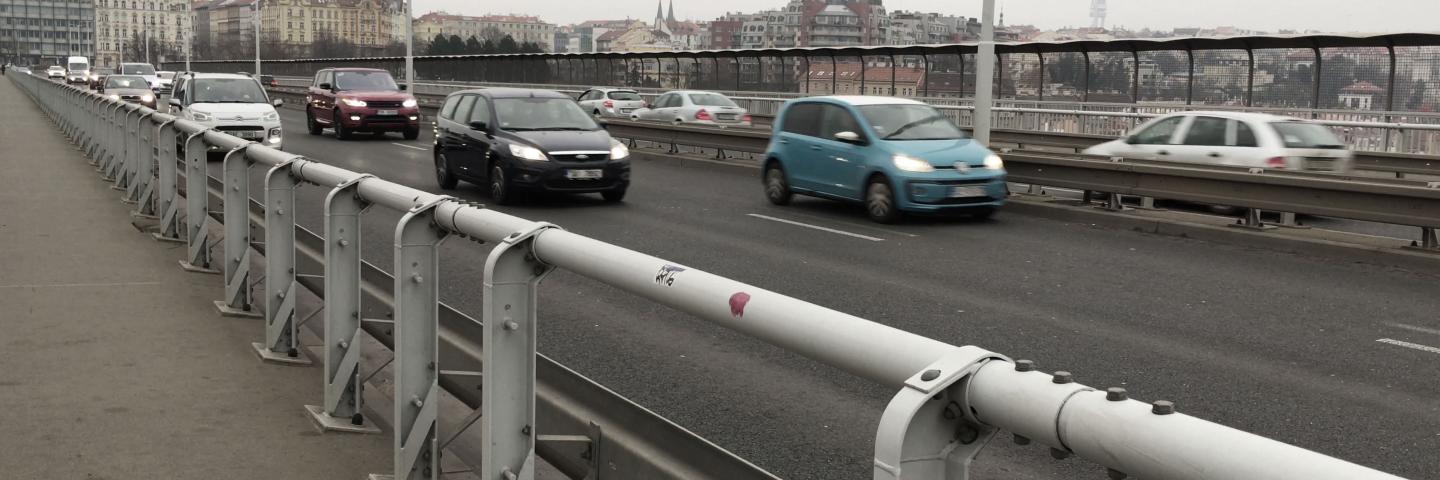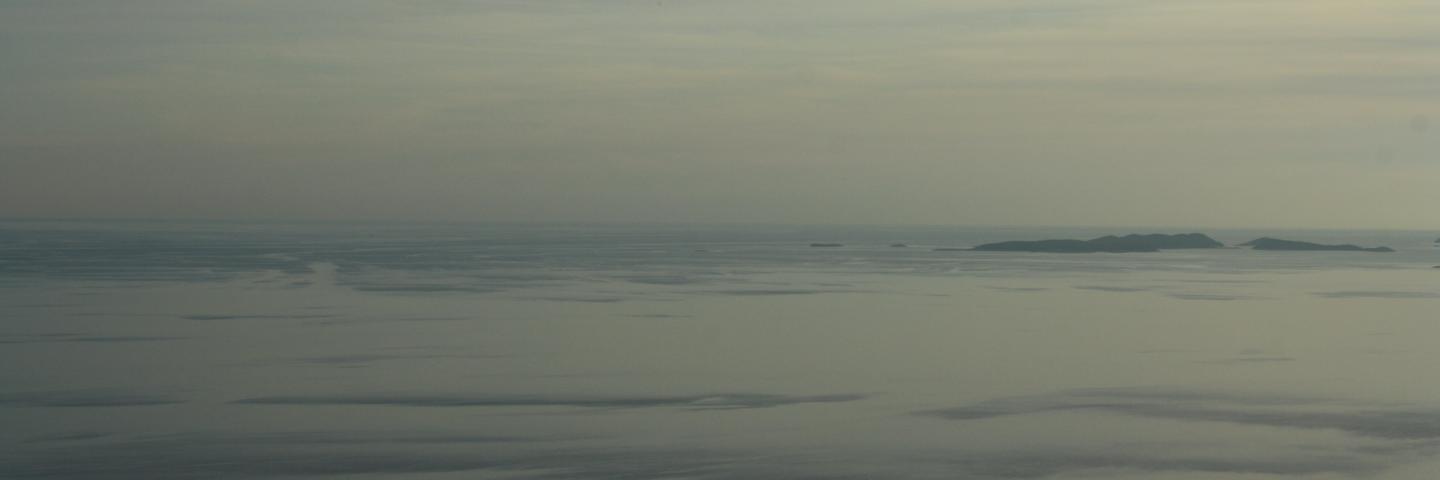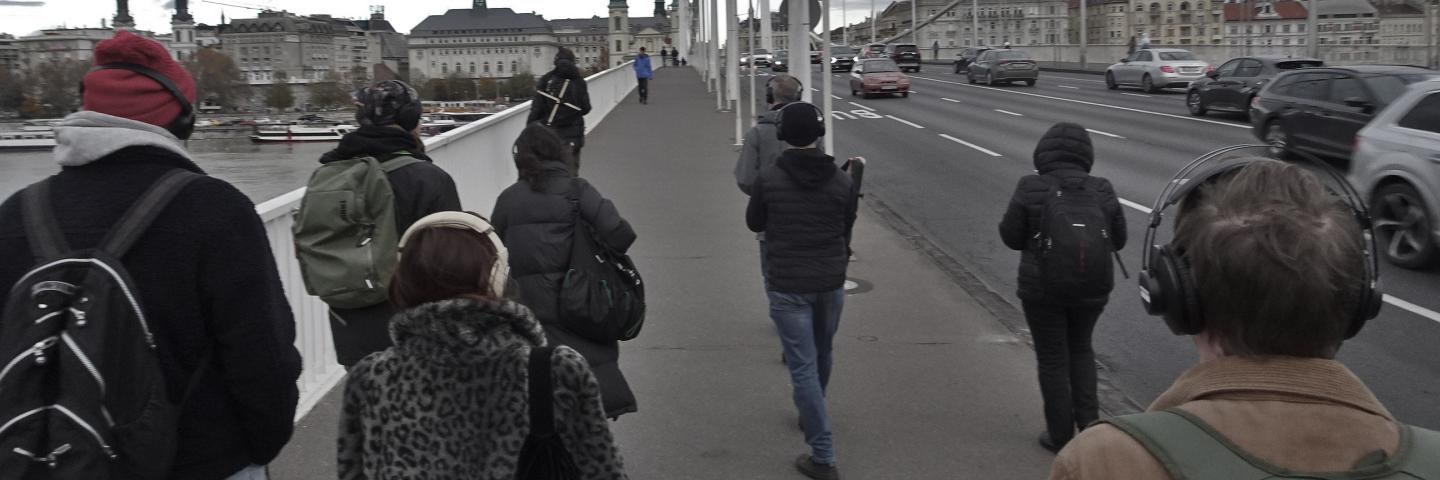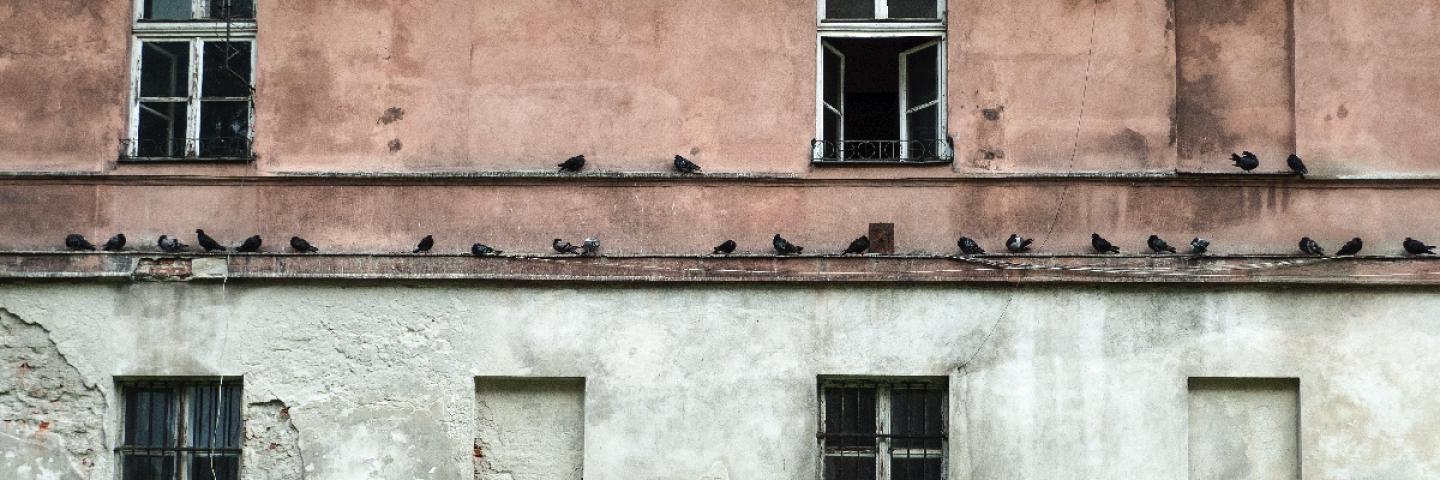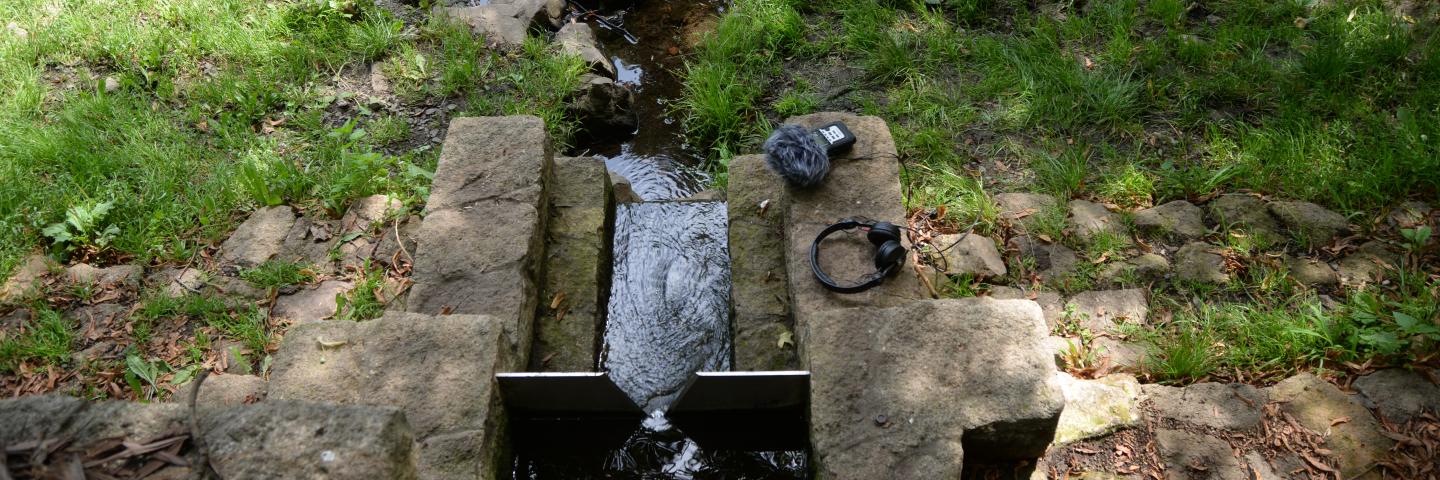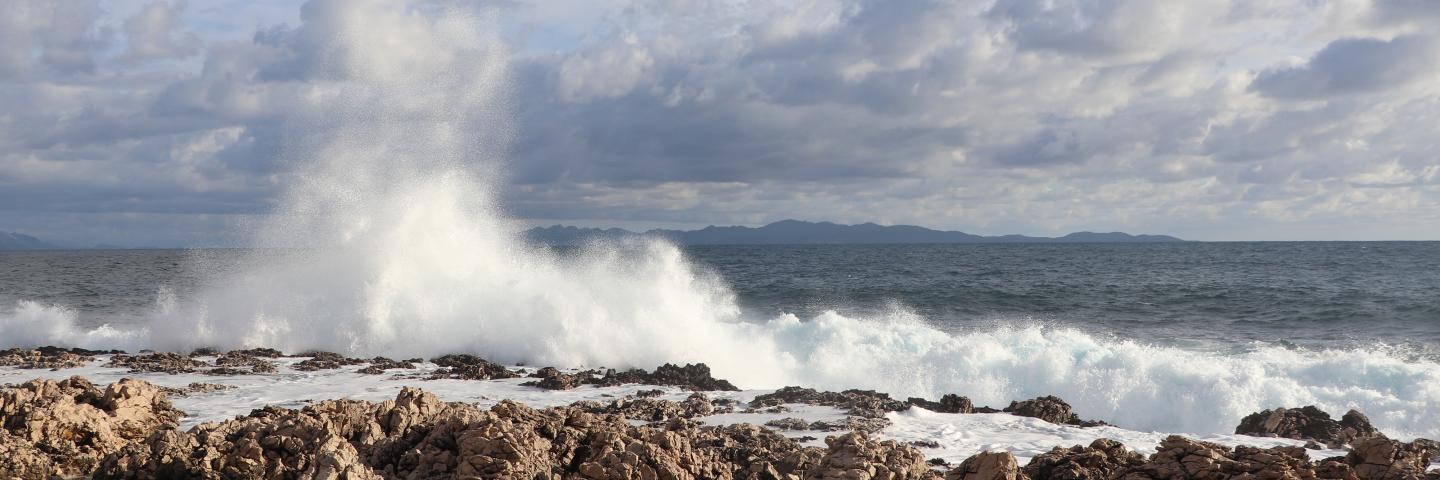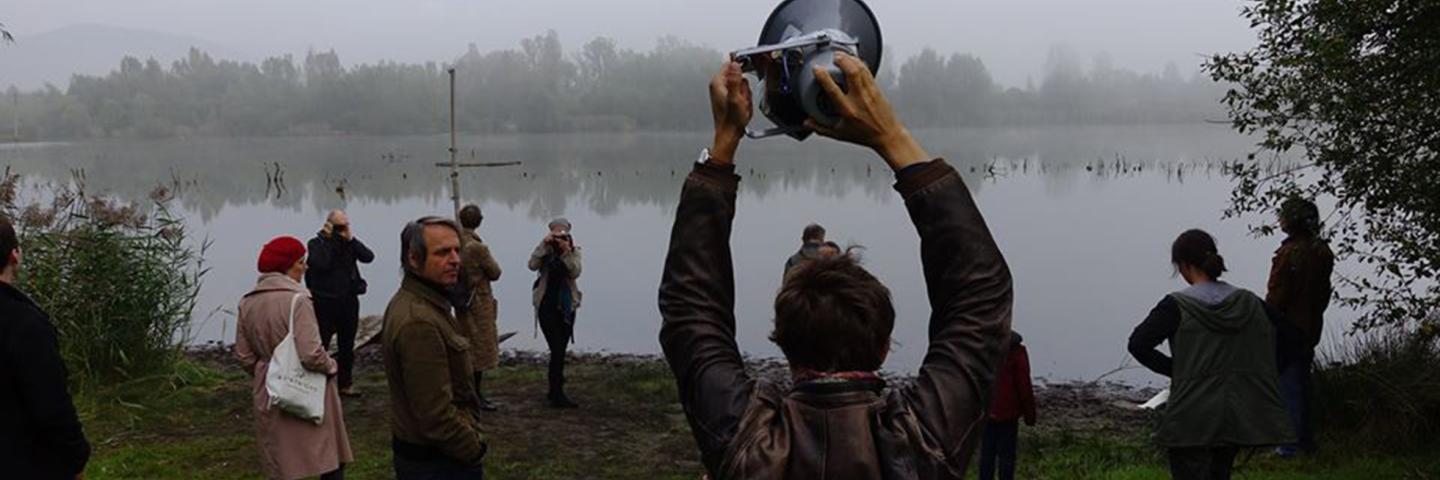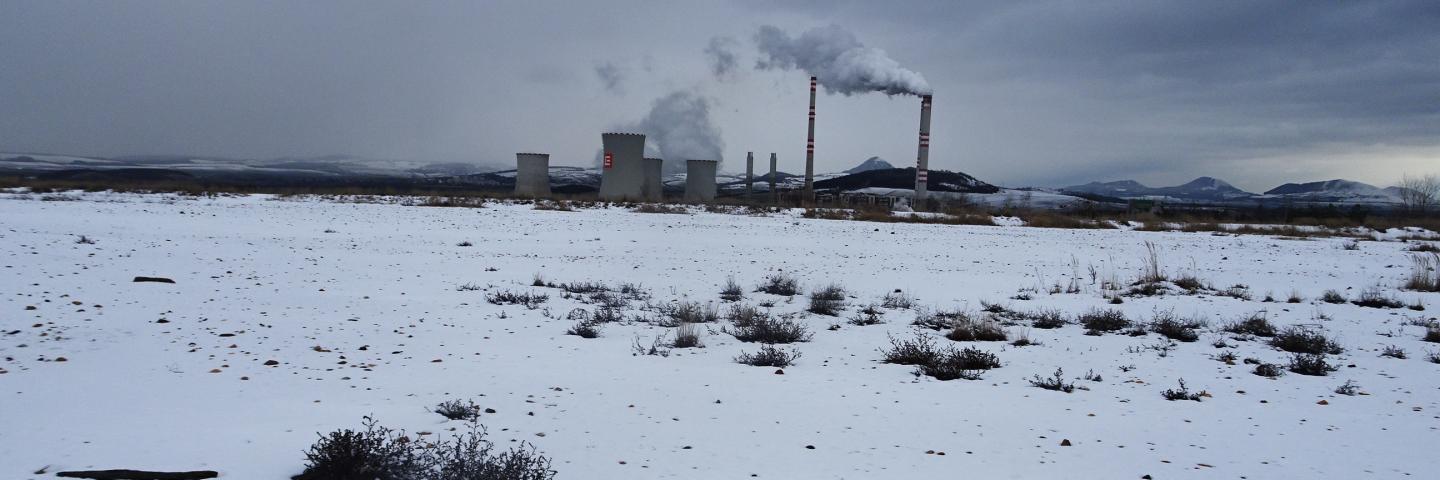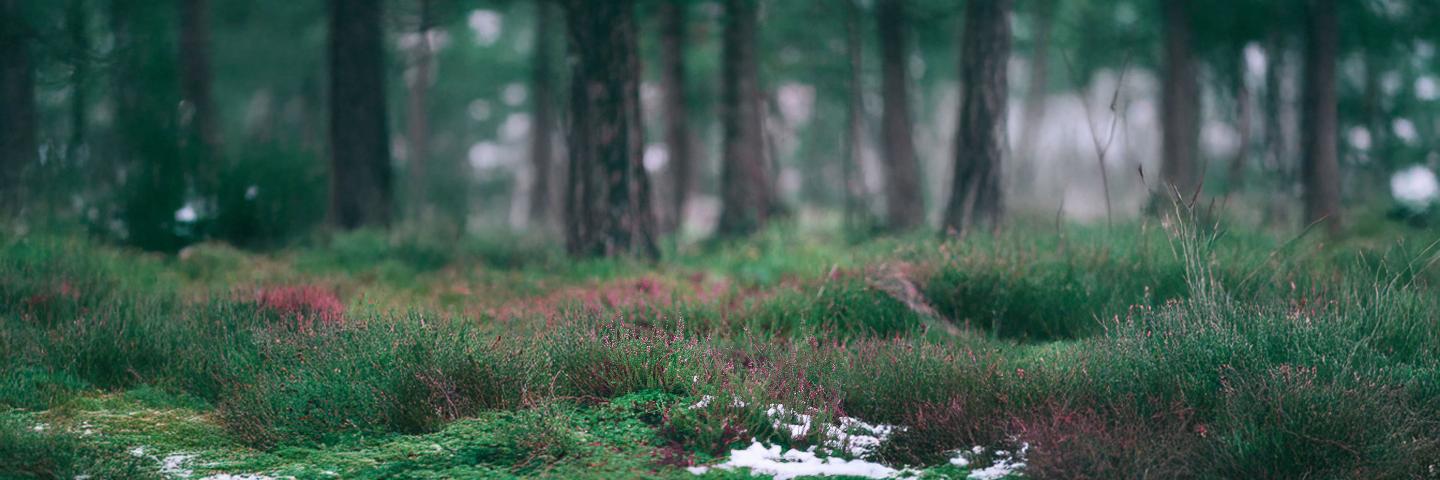CENSE QUESTIONNAIRE II. 2024

(photo by Matej Tomažin)
In 2021 we asked all members CENSE five open-ended questions as a way of taking the pulse of the community.The result was edited and distributed as a PDF Almanac publication, which you can download here from this site for free.
3 years later end of 2023 I sent the QUESTIONNAIRE II: What changed meanwhile and what didnt? Your answers could be included in the epublication The CENSE Almanac II - Rapyuta Thanks for your comments
Miloš Vojtěchovský
Questions II
1. What do you see as a positive development or achievement in environmental policy in general or within the community of Acoustic (or Sonic) Ecologies lately?
2. What do you consider as a common ground between the disciplines as composition, sonic ecologies, bioacoustics, environmental activism or art of listening in your field of expertise? Can you name any examples or initiatives you are currently involved in or would like to initiate?
3. Do you have opinion about the way how "de-contextualized" field recordings (or other captured sounds) are used in contemporary music scene (such as publishing recordings or doing live performances with field recordings as source material)?
4. Can you comment on the situation in your field of expertise concerning trans- or inter-disciplinary collaboration? What kind of and how much feedback is there between your acitivities, the broader community and the public?
5. What do you think could help to increase the involvement of broader public and / or policymakers to help promote positive changes in environmental consciousness and the policy of the country in which you currently live?
Answers
John Grzinich
1.There seems to be a growing number of people who are active in promoting sensitivity to the environment through listening. Whether this is through schools, education institutions or projects, I notice a healthy awareness about the scale of our unfolding crisis and that there are things that can be done on the ground. This awareness or willingness to engage in the issues at hand regarding the climate crisis are still not reflected widely in political discourse but there is still always time for this to change.
Obviously many of us are bound together in our sensory interest in sound and listening which brings us to common questions regardless of discipline, namely how can we contribute to awareness and change of perceptions and attitudes. Most recently I organized a series of events around International Dawn Chorus day, that included Listening Walks, and a Sound Camp’ for the 24hr Reveil broadcast. The participants were both from the general public and a diverse range of international students from the Estonian Academy of Arts coming from Media Art, Design, Architecture, Animation, Movement and so on. It is important not to overlook the diverse backgrounds and interests despite coming together for a rather specific niche event. What emerged was the need for such events to bring people together for a ritualized form of listening as a way to engage with the more-than-human world we share.
I am aware that there is an extractive element to de-contextualising sound, so I try to find a balance in recording, live streaming and contextual environmental listening to allow for diverse interpretations in what we listen to and the ways we listen.
My answer is similar to what I said above about ritualising listening to bring people together. I have engaged people from so many backgrounds, cultures, age groups etc in listening activities over the years, I can confidently say I have never seen any negative reactions from asking people to listen more in just about any context. This does however require a specific skill in communicating and facilitating aspects of the listening process so there is a fairly clear understanding about the intentionality behind guiding our ears toward different subjects and matters.
Well I intend to keep doing what I’m doing. Of course there are challenges involved in making larger impacts on policy or mainstream attitudes. We are up against some very deeply rooted colonialist habits and prejudices that feed destructive human-nature, human-human divides, threatening our very existence. There is no easy way out and unfortunately the conditions might have to get worse before they get better but let’s hope not.
South Estonia, May 2024 maaheli.ee
Grant Smith
A move from sites to situations. Work with sound as advocacy for (legal) rights of rivers and other (complex) environmental entities.
I'm listening to a live stream by Dorota Blaszczak from a summer house in Nowe Zalubice, Poland. It's an extraordinarily detailed evening chorus in a place that is also used by people, with sounds of diy, aircraft etc. This is using a streambox which the artist took back with them from the meeting in Budapest. This seems a simple, and in some ways remarkable, example of the possibilities for live transmission of environmental sounds. zalubice_nowe_summer_house. On 29 June, Soundcamp are broadcasting 'War-Torn Ecologies: Resistant Worlds from The Mosaic Rooms to Radio al Hara in Palestine. This is a multidisciplinary artistic programme, taking place in London and Beirut. At the same time we continue to develop Radio With Palestine, a series of live transmissions from demonstrations, direct actions, pickets, student encampments. This seems like a useful association.
For Soundcamp, context is important. If sound is being used in a more abstract way (also), the situations the sounds come from can be described, acknowledged and credited in accompanying notes etc. Why not?
A recent collaboration with Alice Eldridge at the University of Sussex led to a long-term live stream from a wilding site with beavers in Sussex, UK. The data set is intended for scientific analysis. The sounds have been of quite wide public interest. (https://wilding.radio/).
We are really interested in supporting a widening community of practice, rather than in addressing policy makers or a general public. We think sound can work in support of artists and activists and extend listening to less heard human and non human communities. With the legacy of the Free Radio movements, we are interested in how sonic ecologies can work in the service of emergent struggles (Brandon LaBelle. We want to develop transmission ecologies (Anna Friz) as the hard- and soft-wares and ways of working that can do that. That includes creating a 'live archive' of everyday resistance and resilience. If our work is turned to the public, we sometimes say, it is (only) 'half turned'. The other half is for us.
Soundcamp, London, UK soundtent.org
Július Fujak
- A realistic and real ecological environmental policy – if it is not connected with the madness of s. c. Green Deal – is very needed today at any level and in different areas of our social life and culture. The agenda of acoustic, and sonic ecologies is unfortunately overshadowed by other issues, especially in Slovak public discourse. But it is changing slowly. For example, in the awareness of how important it is not to create acoustic smog in schools, parks, and certain work environments, at least. But there is not only audible noise and dangerous acoustic smog. There are also hidden, almost inaudible electromagnetic sounds emitted mostly by our digital electronic devices (smartphones, computers, Wi-Fi routers, a stand-by regime of TV, radio, etc.) that are surrounding us almost everywhere, and irritating us plus damaging our health. We do not speak about this enough here.
- This common, symbiotic ground of musical composition (or comprovisation), sound/audial art and bio-/eco-acoustics is one of the ways to focus and point to the significance and real need to change our approach to the environment or space we live in. I try to analyze these topics in the fields of the semiotics of contemporary music (often in various intermedia contexts), as well as cultural studies, and postmodern theories of the late phase of transmuted capitalistic society vs. environmental democracy. I am involved in some scientific projects focused on related processes and phenomena; in artistic articulation, I devoted my time to the creation of s. c. musical/sonic sculptures, and occasionally to performances/sonic walks (also appearing under the pseudonym TJ Vjuga).
I am a big fan of not only the “de-contextualization” of the field recordings, and their public performances, or radio broadcasting, but I also prefer their re-/cross-contextualization in the dialogic context of contemporary music, or intermedia projects. In Slovakia, I can mention the very interesting projects of Jonáš Gruska and his LOM Space, or the sonic installations of composer Peter Machajdík. I created various acousmatic compositions that appropriated the field recordings of special site-specific time spaces (available also in one of my latest albums Transparent Sculptures, 2022/23), or I borrowed some field recordings for this kind of use (e. g. the concrete environments of Adriatic Sea of Manja Ristić incorporated in my composition La Mer, 2022 with her permission). We live in an era when any sound is pregnant with meaning and therefore is proto-musical – and not only because “no sound is innocent” (E. Prévost)…! :-)
Trans-/interdisciplinary research is the primary condition of semiotics, aesthetics, and cultural studies in general. In the field of sonic ecologies and the poetics of contemporary unconventional intermedia music, I cooperate from time to time with environmental/ecologic philosophers, (post)psychoanalysts, linguists, sound engineers, and musicologists as well. And the feedback? It depends, sometimes a little, and sometimes – if it is promoted in media (radio, magazines) or in some specifically orientated publications – the response is more noticeable.
First, it is necessary to raise public awareness of the fact, who is the main polluter and destroyer of our environment on a global scale. It's fine when we separate the waste, buy bio-/eco-products and so on, but… In the conditions of a current phase of trans capitalism – which causes far-reaching all-planetary crises (ecological one is “only” one of them) and is unable to solve them at all –, it is necessary to stop as soon as the global disaster and unprecedented pollution caused by the richest class - the oligarchs and their megacorporation networks (acting behind the visible political-economic structures) who are living at the expense of the rest “99%” of human population, flora & fauna. Environmental consciousness and policy in our country must decrease these harmful influences as much as possible, it must be not campaign-like superficial, not extreme as well unprofessional (with which we are meantime confronted too often). They should seriously consider all local givens and specifics, protect them as our cultural heritage, and respect and cultivate our environment anywhere we are on the Earth as the only time-space that allows us to survive.
Nitra, Slovakia monoskop.org
Guy van Belle
- This is a very complex 2-folded question: A. Environmental policy in general
I always try to see both the local and transnational context in which politics vs. social/cultural operations happen. Environmental policies are usually quite different in each country, even different according to regions. As long as we are thinking only top-down and from the national/regional perspective we will be facing continuous and increasing problems on the larger environmental scale. On one side there are the small petty policy makers we have to deal with, who are usually having different motives for making decisions and programs than the true care for the environment and the ecological situation, notwithstanding exceptions. Furthermore the ones that have to realize this are getting more and more de-synchronized from the former, and interpret/ignore it according to their own benefit as well, but don't adjust it for change. The same goes for an EU of representatives that choose for the impact of a green industry above a green environment in the first place, but carefully invest in window dressing and green washing. Let's see what soon the next EU and national elections will yield, but we don't expect a change in current pragmatic politics, which is increasingly using a public and moral disguise for safeguarding individual positions as temporary managers with a too high interest in personal gains instead of investing in a new social agenda, with the necessary ecological and environmental change. The result for what is happening now is obvious, as it leads for instance to increasing farmers' protests in each EU nation state, Czech bio food producers making their products rather available abroad, local activities dumping landfill at places where former natural lakes were, planting large areas full of the same crops and trees creating even a larger monoculture agriculture, and then we haven't started about energy yet. It is obviously all in line with legislation, but interpreting it in a specific way, aiming at a contrary output. Meantime we keep postponing environmental goals from 2025 to 2030, then to 2040 and so on and so on.
B. Within the community of Acoustic (or Sonic) Ecologies: Simply holding up a microphone, recording something, and creating an unverifiable story out of it does not make a change. Meantime my feet are sore from walking. It never did make any change for the last 50 years (as far as I can see, I am limited by age, sorry). I think we should all admit that the "community of Acoustic (or Sonic) Ecologies" is only a very small demographic percentage of the population without much impact in general, and certainly not on the environmental policies in general. Moreover we are rather in line with general art policies (only), and so with national and international policies. I'd rather believe we can longer term change these art policies, but in reality we only can divert a little. We can never change the art market for instance, which is the main driver behind the arts. Also, if we become part of the art market we will only make art for that market and not for any environmental change, logically. Maybe a reason to declare again: everyone is an artist, but it's also time to add this: let's only make environmentally friendly art. And let's tackle the next problem: how to deal with the technology we are all using for playing, recording, performing, traveling, working and living, etc. Last week we were looking with local people who were interested in recording underwater, how to help them with their equipment without forcing them to invest a lot of money in hydrophones and recorders, and other equipment for editing and sharing it. Listen, I am not a radical, I believe in diversity, contradictions and differences. But I haven't found a lot of solutions within the sub-sub-sub-..-sub sections of art called sound art. So let's work harder at it, but from within a larger community instead of an artistic niche (and we don't have to become social servants for this, as long as we maintain our experimental attitude, I see a lot of interest in general and esp. youngsters these days).
- An interesting phenomenon in the arts is the late 20th century vocabulary for the tendency to expand the arts with technological and material innovations. Every couple of years new terms and names for the same things emerge from art critique, thematic exhibitions or festivals, statements by artists. Probably it stems from the blindness, or impossibility to understand innovation and experiment, and at the same time the denial of multidisciplinarity within the evolution of art itself. Contradictory enough, the artists seem to embrace this with pleasure, and jump at every new occasion to ride the wave of new fashion, with a new label, while their art does not change much in itself, and art in general neither. Think of all the names that were given to electronic music since the 1960s. These days almost everything in music is getting labeled sound art, and so everyone becomes a sound artist, even if one is making some jazz or pop music, as long as it is being performed in a museum or gallery (which already ran out of ideas for decades).
I don't see a fundamental difference between the above mentioned terms: composition, sonic ecologies, bioacoustics, environmental activism or art of listening... They just indicate different approaches within treating the material of sound, and show merely the diversity of the business we are dealing with. Splitting and redefining sub-sub-sub fields for what are creative expressions only leads to useless fragmentations. When Klangkunst was invented in Berlin in 1994, the idea was rather to bring the traditional fragmented art disciplines together, and add the notion of sound to the hegemony of images and objects. And so now, when we think of extending art to non-human expressivity, adding social emancipatory or environmental notions, we can still call it just art, instead of community art, ecological art, or science art. Sound and image, word and movement are an important material to work with creatively. But maybe we can still warn audiences adding the term experimental or traditional or so, though I think it isn't of any use in the long run.
Ah, my own activities. Maybe they are not so important. Over the years I decided not to make any solo contributions to art. Which means that one can concentrate better on subjective issues within collaborations, in common settings. KRA[kra.land] is situated in the countryside, and we tend to work together with alternative organizations in the small rural city and villages around: a social café, a coworking space, a school in the woods, some bio farmers, musicians and other home workers. Motivating artists to work at something together is not so difficult: they have the need to do that to stay within the profession. But working with normal people can be quite challenging, since they are certainly interested in making and doing creative things, but usually they are not so keen on performing or exhibiting it before an audience. They have different goals in life.
Oh yes and there is also ButtuLab, formed in korona times, trying to boost new skills with new techniques. The 3D printing mainly produces decorative and functional objects (Vladimir Tatlin would have been proud of us), but it was already useful in the sporadic workshops on recording, making piezo and electret microphones. For the latest Reveil (2024) we produced a collective, spatial (binaural) stream from 3 locations 7 kms apart, at sunrise. So the KRA summer plans are mainly to look further into the role/importance of water within environments, it's natural presence/disappearance, the current (mis)management, and new possible attitudes within the countryside. The interesting thing with water that it leads to discussing biodiversity in general. We try to involve the immediate surroundings, and will invite very diverse guests from art, biosciences, etc... Apart from everyone else who is interested, all CENSE members are welcome. A free program combining the exchange of skills and techniques, field recording with local guests, listening moments outdoors will be offered for the weekend of August 15th. We want to repeat this in Fall, which will be announced in time. On general request we bring back the Irregular Summer Lazy Sundays [islas], in which people visit, talk, play music, eat and drink, plan and do nothing.
- In the light of what was written above about field recording and art, de-contextualization is a complex issue of course. It is following still what was accomplished in the 20th century, and keeping up the fashion. Like the old arts, art objects today are still put up in sterile white spaces. Often when there is a video or projection, a concert or listening session, the room is darkened during the daytime. Before and after it, everything is promoted in glossy magazines and on shiny screens. So all we seem to do is to isolate our works from life, which makes it easier for consumption and selling in the end. So de-contextualization is synonymous with art itself. On the other hand, let us not forget the nature of what we are doing. We are working with highly technological devices, only to represent sound to our ears. But recordings can never be identical to the original sound though it is still the better representation of sound and music than scores and annotations. Also the historical context is often ignored. Years ago, when asking a renowned field recordist what the impact was of the apparatus (recorders, microphones, the process of cutting and editing,...) he avoided all reflection on the evolution of the technology confusing his recordings with the real original sound. But the difference is of course obvious when you compare today's sound materials to the earliest known field recording with a wax cylinder (a Shama bird, 1889 by Ludwig Koch). Béla Bartók was using a phonograph to record and transcribe folk music. Walter Ruttman's Weekend (a radio piece) was recorded and cut on the soundtrack of an optical sound film. And now jumping almost a century, today when we are using digital recorders and even microphones (MEMS) which offer new possibilities for registrations and manipulations, we still make mere representations. A bird call hears differently when recorded and played back, than the same sound in the middle of a wood, or on an open field.
So, let's face it, we are all continuously making operations on sound, from cutting to normalizing, filtering, editing out what we don't like, spatializing it, etc.. Even if we are just trying to make the recording as similar as possible to the memory we have of what the original sound in context was. Sometimes we do it for the listener to hear this with a better quality or add contextualization. Furthermore, sometimes we want to overcome the limitations of our hearing system: we have a limited perception within the spectrum. Sometimes we want to hear what we cannot hear: infra and ultrasound. So, we have to work with algorithms and other processes - digital or analog doesn't matter here - to be able to (let) hear bats and insects, bacteria, etc... And let's be serious, if we want to understand the world better through sound, we are all embracing AI/ML: frequently I am using Chemnitz University's BirdNET or Cornell Lab's Merlin app on my phone to realtime identify birds (and subsequently look up pictures, read the bird's behavior, and listen to variations in the calls and tunes), as well as PlantNet for learning more about the surrounding vegetation. Basically we decontextualize the whole time, and isolate phenomena, maybe to model it. Don't we widen the context to understand more (but not always better). And then we are having an increasing number of tools to play around with the sounds. Using MUBU or FLUCOMA, artists can automatically splice their hours of recordings in a more meaningful way than we as humans can achieve, and include neighboring very diverse sounds according to their physical parameters. Adding newly synthesized models based on it, and relating gestural operations to it. Also using ambisonics, setting up simulations of dynamical 3D spaces offer interesting creative results with the registrations. You can call it de-contextualized but to me it looks more like creating new contexts and different environments. So let's confess: I committed all the sins described here above: recording as a purist, manipulating for the better of the sound experience, creating new inhumane environments. But only to keep diversity in, and stay critical within our small but complex tiny niche of art and culture. Maybe that is more meaningful for creativity. But maybe I am a fool and still don't know anything about the meaning of creativity. (I read somewhere that even Darwin was puzzled by it because it did not fit the rest of his assumptions and theories, could that be true?).
I never got a field, I was offered one in front of the house but it was too expensive, so I never acquired it. But I guess I have been working in the arts and in science, and mainly with sound, but connecting it to anything else. Connecting may be wrong even, because I see no separate thing here. Even in musicology, I worked for Prof. Marc Leman (IPEM + art science interaction lab /UGENT), who developed the concepts of systematic musicology and embodiment throughout his work. So apart from the idea that everything in music and sound does not exist without our human body, and it's movement, today they are making wide use of 3D representations, very precise motion capturing for interactions, and high definition spatial rendering for research and simulations. Basically everything I mention here breaks down the notion of purity and sound, and tries to identify the relatedness of all things without an environment. So my colleagues are technicians and bio-engineers, statisticians and mathematicians, musicologists, dancers and musicians. And it is fun to work together, across disciplines and skills. As my own artistic career ran parallel, a major switch happened end of the 1980s when I radically switched to computers and digital technology/programming. After that the gradual integration of image and data became almost as natural as the evolution of our machines. At that time some started discussions about the terminology, but to be honest, who in the arts ever cared about the ontological differences between trans-, multi- and intermedia. See above, for an explanation of the high-technological background of field-recording, and it's claim of purity. A second major change occurred for me while setting up an ecological art organization OKNO in Brussels. After 10 years working with people who were proficient in gardening, sensor and communication technology, bio arts of all kinds, we decided to disband to pursue our own different careers. Today we are still in contact, often commenting on the fun we had at the time, working together at art installations with bees and plants, running bio robotic experiments. The next phase for me was to work from a more natural location, in the countryside, as the need grew to connect with local communities and test alternative ecological visions. That is how KRA came about, and how we formed the connected band Rural Development. I think most of things we did had the attention and support it deserved, nothing more nothing less. It is not with the dogmatism of expansion and progress that impact and appreciation is made I guess.
- I read somewhere that moving as an artist to the countryside, you disconnect yourself from the arts. Yes, maybe from the general arts, and (again see above) its ultimate commercial and depending structural goals. Today I look at other similar groups and places across Europe, but at the same time how to involve local people. I must say there is more audience attending our rural program than there ever was before in the cities where I worked. Statistically it is better that from a demography of 20ppl/km2 20 people come, then 20 people from 500ppl/km2? It shows an honest interest bottom-up, even for experimental art, including field recording and sound art. Maybe it would be good all artists actively try to find niches where one can maintain and express their non-conformism and experimentalism. Let's connect those via a different view about what regionalism and nationalism can mean: convivial but ecological, and diversely creative.
Kravín, Czechia kra.land
Peter Simon
- Yes, we can do that. We should and must carry on and share our knowledge with the outside world. There are so many good ideas, concepts and work that need to be publicized.
- I see positive developments in environmental policy. However, they are not decisive and not fast enough and sometimes contradictory. There is a sensitivity for environmental issues. But there is also resistance, especially from large corporations. As far as acoustic ecology is concerned, it is still a niche topic. There is still a lot to do, because it is a part of ecology.
- Interdisciplinarity is the key word for me here. And also more practical experience. There are many initiatives that are active locally. The question is how this knowledge and experience can be pooled and how global exchange can be promoted. This requires financial support, which is hard to come by these days.
- I am pleased when such recordings are used. This definitely attracts attention. The context is important but not decisive. If only samples are used, this is a different use than if entire soundscapes are used. It's about the intention of the composition or the sound piece. Is it about sound ecology or music? Sometimes it's also interesting not to know the context, so you can engage with the sound in an unbiased way. And if I want to know something about the source material, then I simply ask.
- The most important thing would be to end all wars first. That would make it possible to shift the focus back to current environmental issues. And also to think impartially about consumption, knowledge transfer and science and to develop joint strategies. And to do so globally and honestly. We can see it right outside our own window. The masses of rain, for example, are a sign of the intensity and speed with which everything is changing. We see it every day in news reports from all over the world.
Cologne, Germany
Tomáš Šenkyřík
In this area, I consider the recent developments as optimistic: scientists, politicians, artists, various communities point to the topics that are related to the situation of the environment and that ecology resonates there. I am happy that representants from government do listen to municipal politicians concerning issues of ecology. Beneficial subsidy programs emerging which can significantly help to improve conditions of landscape. For example, regarding the problem how to sustain retention of water. On the other hand, there are many areas that need deep and immediate improvement. For the time being, we do not know how to treat sewage water systems. For example, in Židlochovice, it goes directly into the Svratka river. If we want to retain it in the landscape, we are not alowed because according to the law it is polluted water. But there are shifts in this area, even very slowly. But this is exactly a topic that can be approached from various perspectives and has great interdisciplinary potential.
Qualified academic articles dealing with such topics are published about common ground of these disciplines. From my point of view and my own practice, I consider the act of listening as a crucial issue. Because attentive listening means an approach which leads towards diminishing superficial relationships towards environment, through sound to look for an increasing awareness. Looking back on my own listening experience, I realize that I learned all about listening from regularly listening to dawn chorus in forest. This experience for me opened rather new perspective also regarding my concept of music and sound art. I am paying more attention to acoustic qualities of my own environment where I live on a daily basis.
I don't mind the decontextualized appropriation of field recordings, as long as the piece sounds good and if I apprecitate the composition. This proves that the author reached a new context, for example in terms of the harmonic, rhythmical relationships inside the composition as a whole. We are happy because we live in times when the recording technology is affordable to anyone and it isn't limited anymore to big music or radio studios. Everything on this area became more liberated and relatively independent. Following artists performing live with field recordings has always been big adventure. One of first I came across was Aki Onda's performance which was an incredible experience. The existence of labels specialized on releasing of field recordings is rewarding and inspiring. My main resource for discovering new compositions is the Bandcamp, or aporee.org, where one comes across field recordings from all over the planet and at the same time it is sound database for further creative work, full of very particular material.
About ten years ago I started systematicaly recording and mapping the South Moravia landscapes. I did not realize that field recording approach is open, and overlaps with many different areas and social topics. It surprised me how strong communication potential the field recordings gained in galleries as an independent section of culture institutions, how visual artists can be open towards sound art, how to relate to it, usually without preconsumptions that trained musicians sometimes tend to. Field recording can be an important part of the ongoing environmental debate and I think it's because of the very nature of sound. We can exactly interpret and analyze sound and field recordings, and the same time they trigger very deep emotions. For example, a sonic inquire of biodiversity in a floodplain forest: thanks to field recordings, it is possibly precisely analyze the biodiversity and to document extent to which human-caused noise affected it. If something harmful occurs on site and degree of biodiversity is decreasing significantly, those recordings documenting that process can be very emotional.
Politicians often reacting to what resonates inside community, the social topic and what can adress majority. That is why it is positive, that various environmental issues are resonating in mass media. People realize more than before that so many things are influenced by ecology. Those topics becoming more tangible and concrete. I see here a great potential for the local government representatives of smaller municipalities, cities and associations who can become an excellent partners for municipalities, successfully implemented environmental projects, both small and large. People both in villages and cities can perceive them, they can use them practically, they can watch the immediate effects. At the same time, they have personal experience of what some area looked before and after the successfully implemented ecological project. When we started with the first project here in Židlochovice, planing to build new wetland, to reduce the dust polution, get more water to the landscape, to plant forest park, there were many protests and petitions against it. People found out quickly how theis homes improve. Today we completed already next project: the flooded terains and a reconstruction of the meander of the Svratka river. Without protests against this plan, even this project is ten times larger than the previous one. The citizens and not only of Židlochovice, but from of the entire region, tourists and passers-by can watch that within few months the landscape improved. We used the excavated soil to build new green embankment to reduce the noise pollution coming from busy highway. I am systematically documenting all changes in soundscapes of our location through my field recordings. (translated from Czech)
Židlochovice, Moravia
